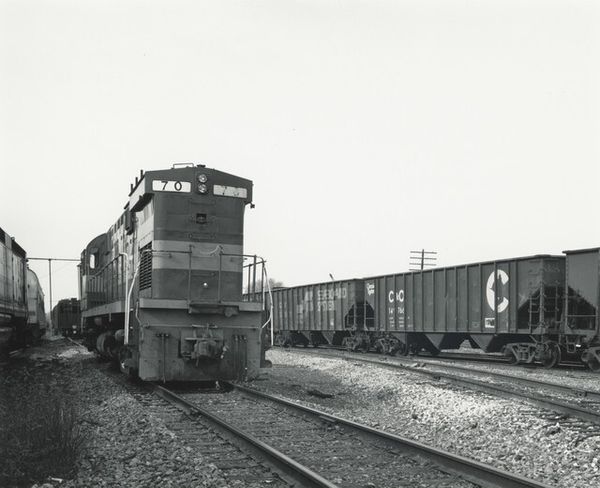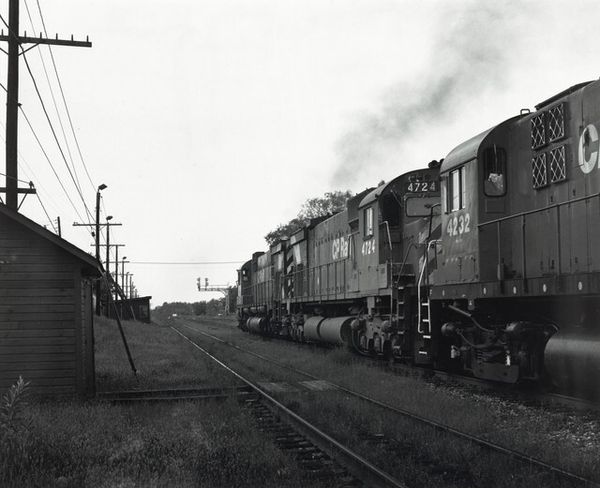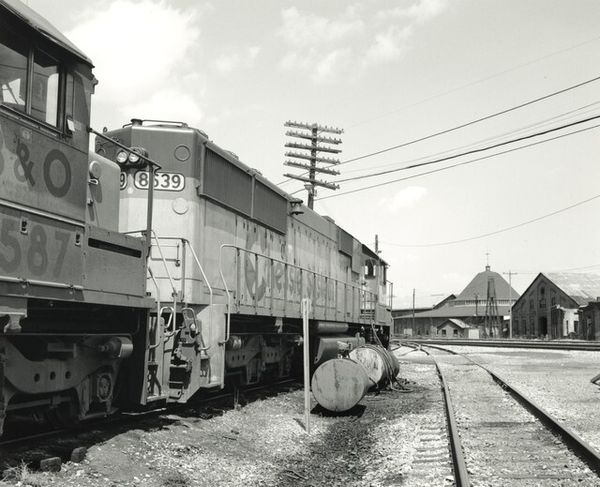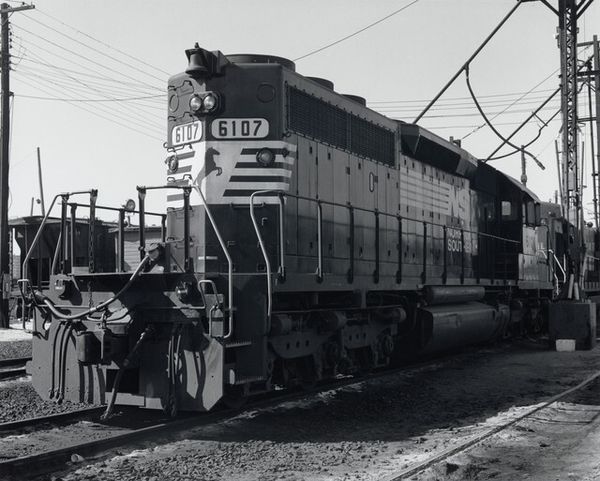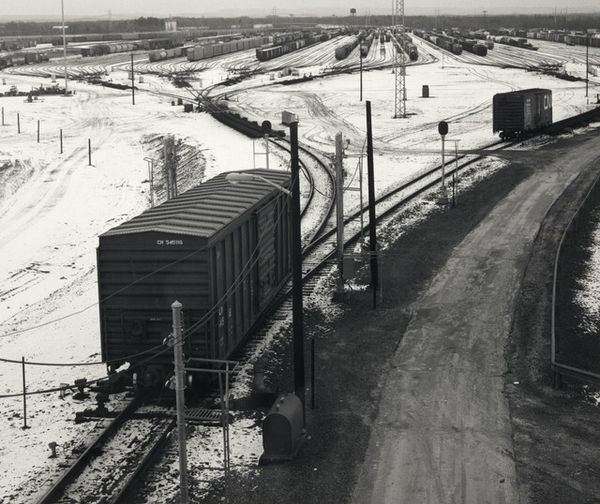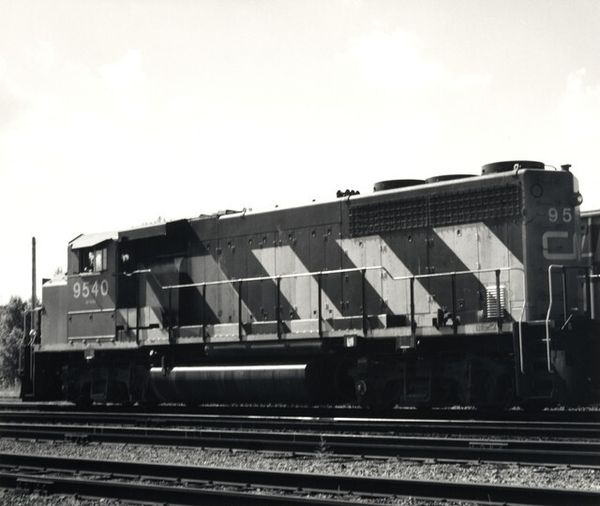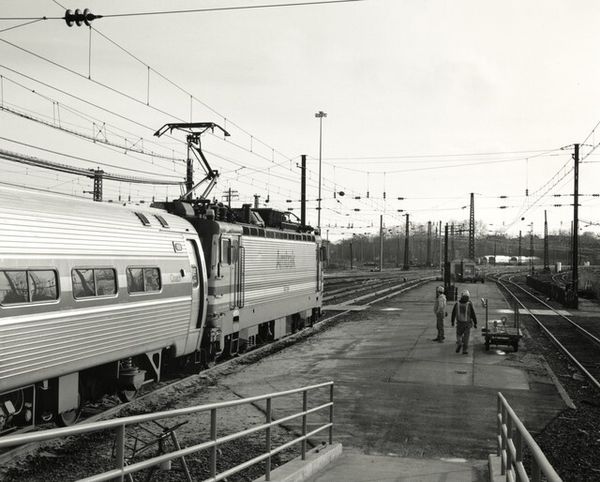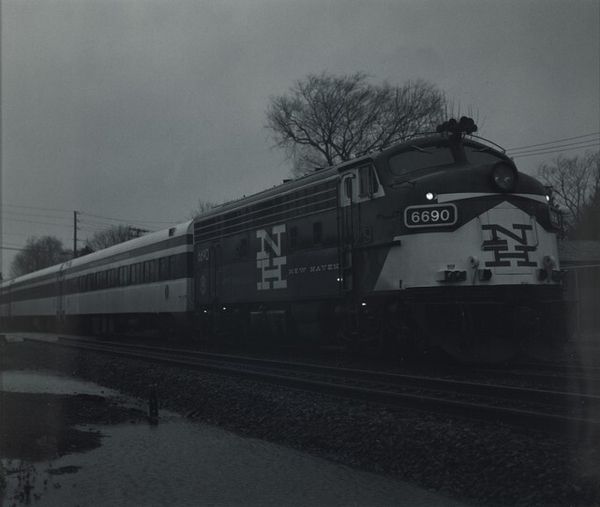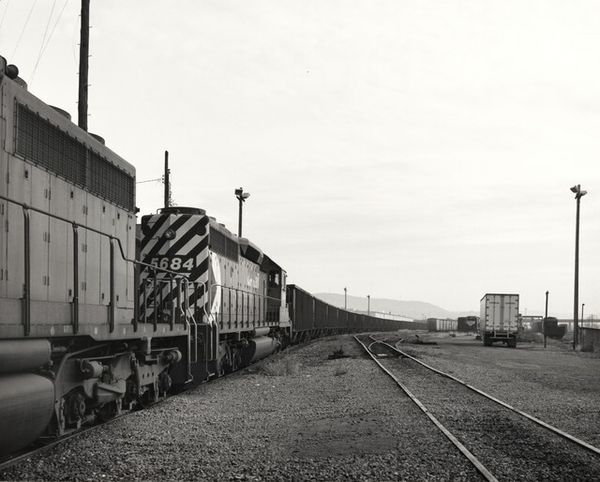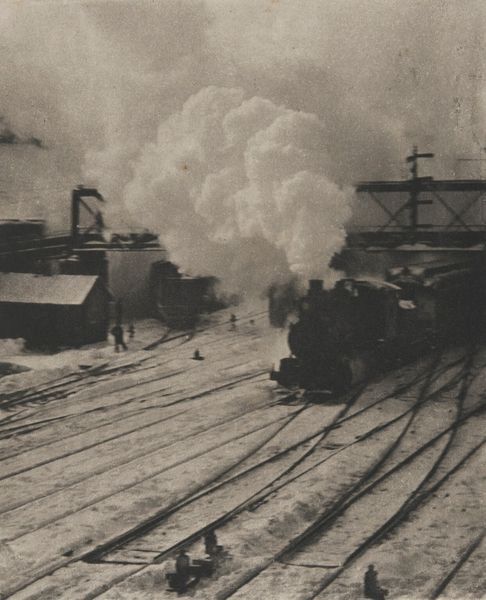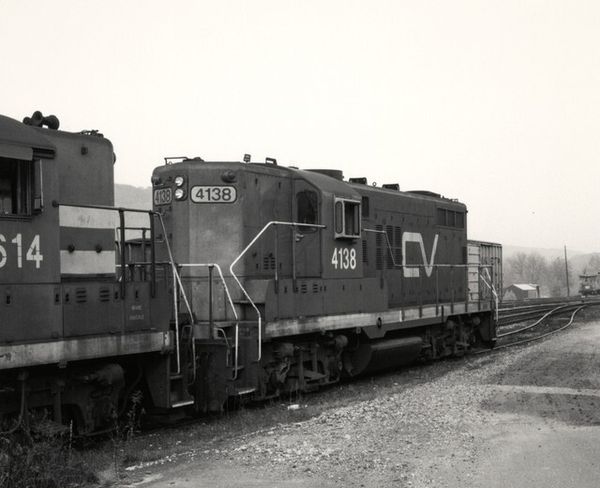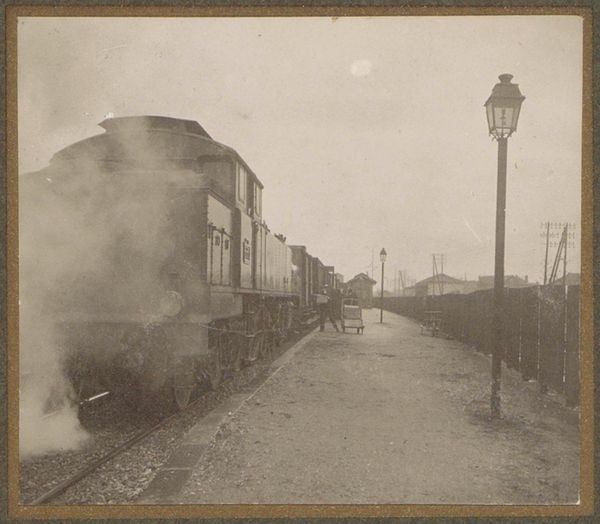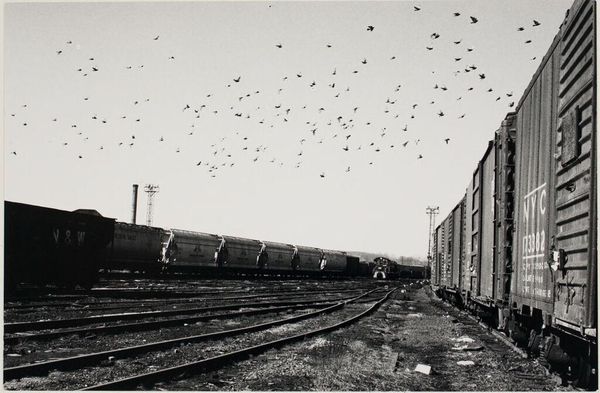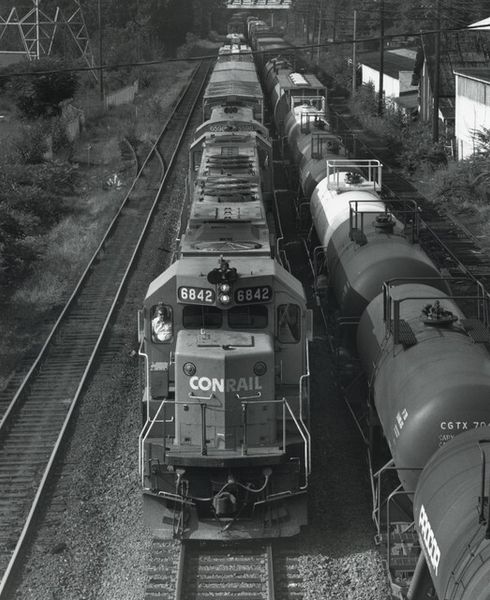
photography
#
landscape
#
photography
Dimensions: image: 44.45 × 54.61 cm (17 1/2 × 21 1/2 in.) mat: 100.33 × 80.01 cm (39 1/2 × 31 1/2 in.) framed: 110.49 × 90.17 cm (43 1/2 × 35 1/2 in.)
Copyright: National Gallery of Art: CC0 1.0
Curator: Welling’s "Boston & Maine Yard, East Deerfield, Massachusetts," made in 1991, strikes me as a stark commentary. What is your immediate reaction to this image? Editor: An undeniable melancholy. The stark black and white palette, combined with the deserted, snow-covered landscape, evokes a sense of industrial decay and forgotten labor. Curator: Precisely. Welling worked with gelatin silver print to create this composition. Its textured surface highlights the materiality of the industrial landscape itself. I am immediately drawn to how these trains act as central figures of human labor against this very quiet backdrop. Editor: The very stillness of the trains contributes to that atmosphere, doesn't it? Consider the socio-economic implications. The decline of industrial work mirrored by the obsolescence of these rail lines speaks volumes. They used to represent progress, opportunity. What do they signify now, standing silent? Curator: What interests me is that these rail lines are essential for moving freight and for building economies; we must consider these essential supply chain realities within the photographic study of industry. How much does labor play into the photographic moment for Welling here? Editor: He presents a complex story through the convergence of photography and industrialization that draws a strong parallel between production, the artist, and those workers reliant on this landscape for their income and lifestyle. I feel like I want to start conversations with people in this photo. Curator: I agree that these ideas about conversations are spot-on here, especially when you think about the dialogue of production happening between photographer and the site here, but to what end? Is this a narrative on industrial America and the relationship between technology and social life, or are we supposed to focus on the labor needed for photography? Editor: I think Welling encourages us to grapple with both simultaneously, blurring lines and asking questions without necessarily providing definitive answers. This allows us to analyze how industrial work has fallen from its glory. These trains signal larger narratives around capital, deindustrialization, and the environment that need to be acknowledged as urgent and impactful elements within his photographic frame. Curator: A fitting testament to our complex relationship with the products of industrial progress. Editor: And an urgent reminder that these images demand social action for equitable conditions.
Comments
No comments
Be the first to comment and join the conversation on the ultimate creative platform.
